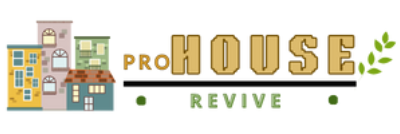In the humid, storm-prone climate of Beaumont, TX, homeowners have a lot to keep up with, especially when it comes to protecting their homes. One feature that often gets overlooked is the chimney. While it may not seem like the most glamorous part of your home, a well-maintained chimney is essential for both safety and long-term property value. Let’s dive into how to extend your chimney’s lifespan with proven tips from your trusted local experts.
Why Chimney Maintenance Isn’t Optional
A neglected chimney can turn into a ticking time bomb. Over time, creosote builds up inside the flue, moisture creeps into the masonry, and small issues compound into serious hazards. Chimney fires, carbon monoxide leaks, and structural instability are all real threats when routine care is ignored.
Keeping your chimney in good condition is a form of preventative home maintenance. Not only does it reduce risks, but it also preserves heat efficiency and extends the life of your heating systems.
Schedule an Annual Inspection—No Excuses
At least once a year, ideally before the heating season begins, have a professional evaluate the condition of your chimney. A certified sweep will examine the entire system, from the firebox to the chimney cap, identifying damage, debris, or deterioration that could escalate if ignored.
In Beaumont’s climate, where humid air can speed up masonry decay and create ideal conditions for mold or mildew, this inspection is even more crucial. Early detection saves thousands in future repairs and, more importantly, protects your family.
The Power of a Thorough Chimney Sweep
There’s something satisfying about knowing the inside of your chimney is spotless. But chimney sweeping is more than just a feel-good service. A professional sweep removes soot, ash, bird nests, creosote, and even the occasional raccoon.
Beyond cleanliness, a sweep ensures air can circulate properly and that your fireplace drafts as it should. Poor drafting leads to smoke indoors and possible carbon monoxide buildup. To avoid this, always hire a trusted chimney sweep in Beaumont, TX who uses professional-grade tools and offers a complete service.
Moisture Is Your Chimney’s Worst Enemy
Even if your chimney looks fine on the outside, water damage could be slowly eroding the structure from within. Brick and mortar are porous by nature and absorb water, especially when unprotected. In a climate like Southeast Texas, where rain and humidity are frequent, water intrusion is a major threat.
Here’s what happens: water enters small cracks or weaknesses in the masonry. During colder months, it freezes and expands, widening the cracks. Over time, this leads to spalling (flaking brick), rusted dampers, and internal decay.
Invest in a chimney cap and consider professional waterproofing treatments for the exterior. These small steps make a big difference when it comes to long-term durability.
Prompt Repairs Make All the Difference
Chimney issues won’t fix themselves. If your sweep finds a cracked flue liner, deteriorating mortar joints, or signs of water infiltration, don’t postpone the repair. Even small gaps in the flue can lead to dangerous gas leaks. Loose bricks or a crumbling crown can fall and cause injury or property damage.
It’s easy to delay maintenance in a busy season—but when it comes to chimneys, early action is always cheaper, easier, and safer.
A Smart Upgrade
Think of your flue liner as the protective shield inside your chimney. If it’s compromised, so is the entire system. Chimney relining can restore safety and improve efficiency, especially in older homes where the original materials may no longer meet current codes.
New stainless steel liners resist corrosion, handle high heat, and are easier to maintain. For homeowners who burn wood regularly, this upgrade can dramatically improve safety.
Don’t Skip on Professional Tools and Knowledge
While it’s tempting to DIY, chimney care requires the right tools and deep experience. A certified sweep brings specialized brushes, HEPA vacuums, cameras for video inspections, and the expertise to spot issues before they become disasters.
In fact, during your next sweep, ask to see a video of your flue interior. It’s eye-opening to see how much creosote or damage can accumulate without any visible signs in your living room.
Keep the Firebox Clean and Dry
The firebox—the area inside your home where logs are burned—deserves attention too. Ashes should be cleaned out regularly, and any signs of rust, cracks, or loose bricks should be documented and repaired quickly. A well-maintained firebox ensures better airflow and reduces smoke issues.
For extra protection, consider installing a heat reflector or fireback. These additions not only protect the back wall of the firebox but also help radiate more heat into the room.
Chimney Prep for Summer and Winter
Most people only think about their chimney in winter, but smart homeowners plan ahead. In summer, have the chimney inspected, waterproofed, and cleaned. This gives time to address repairs before the busy fall season.
Winter use demands extra attention to airflow, fuel quality (only burn dry, seasoned wood), and ensuring the damper works properly to control smoke and conserve heat.
Think Beyond Just Your Chimney
If you have a fireplace, odds are you’re concerned with whole-home efficiency too. Consider how your HVAC system interacts with your fireplace. A drafty chimney can pull warm air out of the house, leading to higher utility bills. Simple additions like a top-sealing damper can help manage this, improving both energy efficiency and safety.
And speaking of HVAC, routine chimney cleaning in Houston, Texas is a good reminder that chimney maintenance is part of a broader system of home care.
There’s no single trick to making your chimney last longer. It’s about commitment, consistency, and trusting the right professionals. Whether it’s keeping moisture out, inspecting regularly, or addressing small repairs before they grow, these steps add years to your chimney’s lifespan—and peace of mind to your home.
